-
IP addresses are NOT logged in this forum so there's no point asking. Please note that this forum is full of homophobes, racists, lunatics, schizophrenics & absolute nut jobs with a smattering of geniuses, Chinese chauvinists, Moderate Muslims and last but not least a couple of "know-it-alls" constantly sprouting their dubious wisdom. If you believe that content generated by unsavory characters might cause you offense PLEASE LEAVE NOW! Sammyboy Admin and Staff are not responsible for your hurt feelings should you choose to read any of the content here. The OTHER forum is HERE so please stop asking.
You are using an out of date browser. It may not display this or other websites correctly.
You should upgrade or use an alternative browser.
You should upgrade or use an alternative browser.
Japan 8.8 earthquake & Tsunami
- Thread starter Cestbon
- Start date
- Joined
- Aug 3, 2008
- Messages
- 23,454
- Points
- 0

Keiko Suzuki prays at the site where her home used to stand on March 11, 2012 in Rikuzentakata, Japan. Her uncle Kazuyoshi Sugawara who lived across the street was killed when his home was swept away by the tsunami last year.
- Joined
- Aug 3, 2008
- Messages
- 23,454
- Points
- 0

Tomoe Kimura (right), an evacuee of Okuma town, holds a bouquet with another evacuee as they walk towards a mourning event for those killed by the disaster during a temporary visit to the nuclear exclusion zone in Okuma town, Fukushima Prefecture on March 11, 2012.
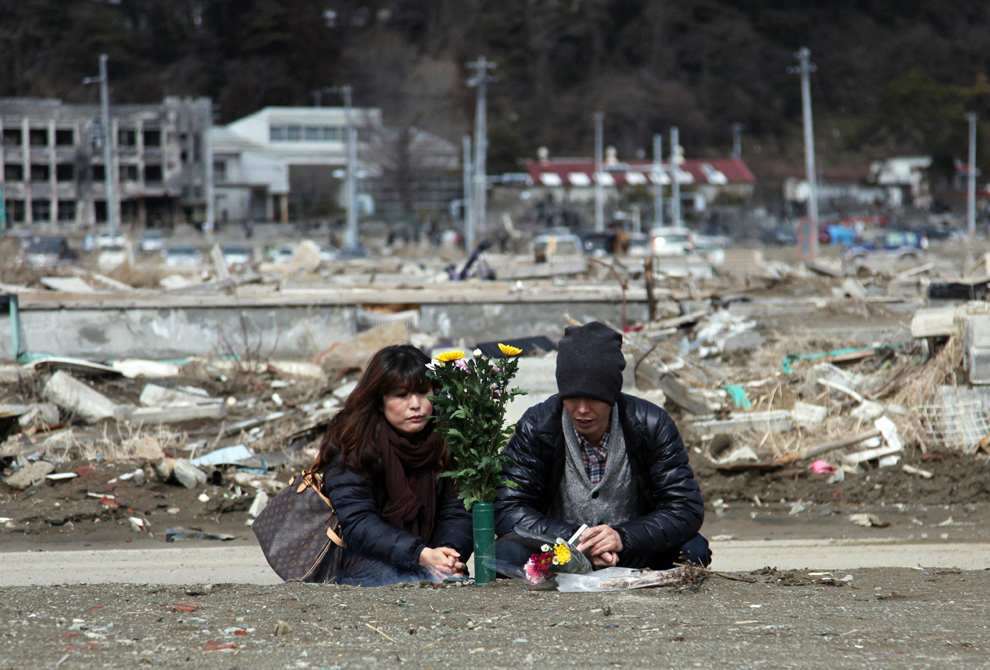
Tetsuya Sato and his wife Akemi, whose relatives went missing in the tsunami, offer prayers for the victims at Kesennuma city in Miyagi prefecture on March 11, 2012.
- Joined
- Aug 3, 2008
- Messages
- 23,454
- Points
- 0

Buddhist monks offer prayers for victims of the disaster at Kitaizumi beach in Minamisoma, Fukushima prefecture on March 10, 2012.

A couple pray where their home was before the disaster in Onagawa, Miyagi prefecture on March 11, 2012.
- Joined
- Aug 3, 2008
- Messages
- 23,454
- Points
- 0
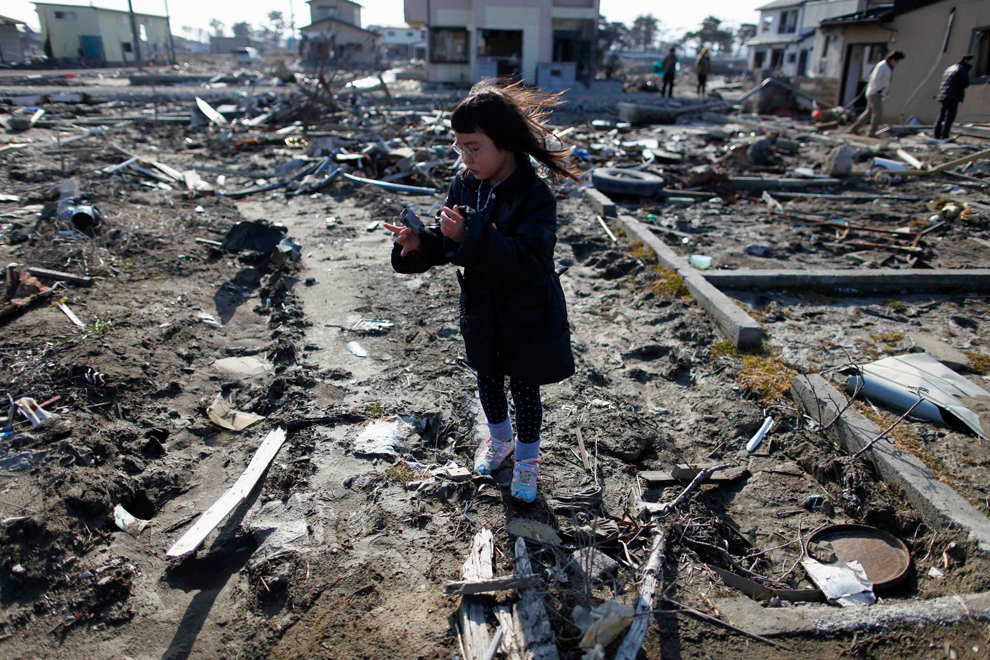
Wakana Kumagai (see picture number 7) visits the spot where her house used to stand in Higashimatsushima, Miyagi prefecture on March 11, 2012.
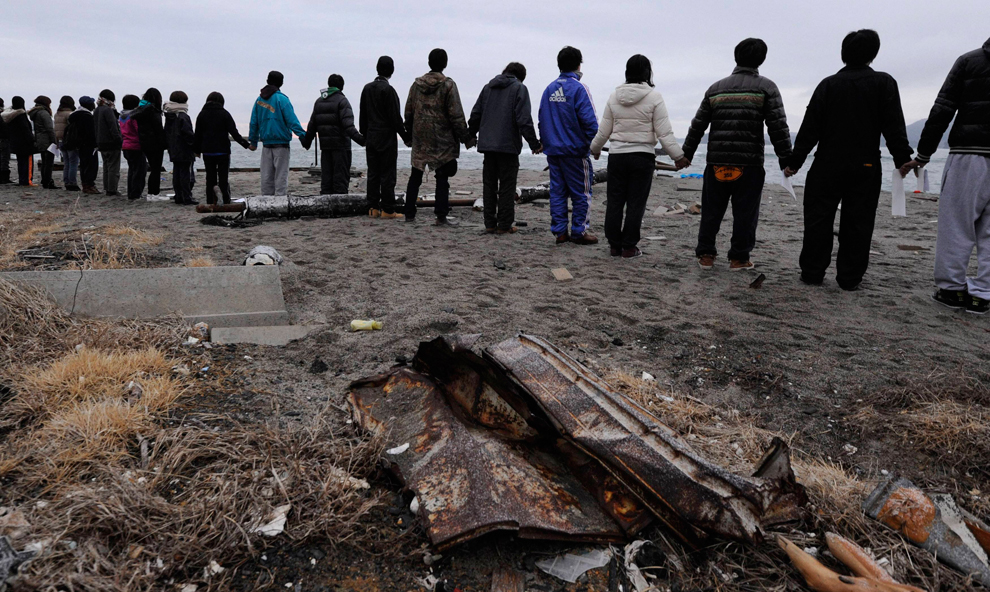
People join hands facing the sea to mourn victims of the disaster in Minamisanriku town, Miyagi prefecture on March 11, 2012.
- Joined
- Aug 3, 2008
- Messages
- 23,454
- Points
- 0
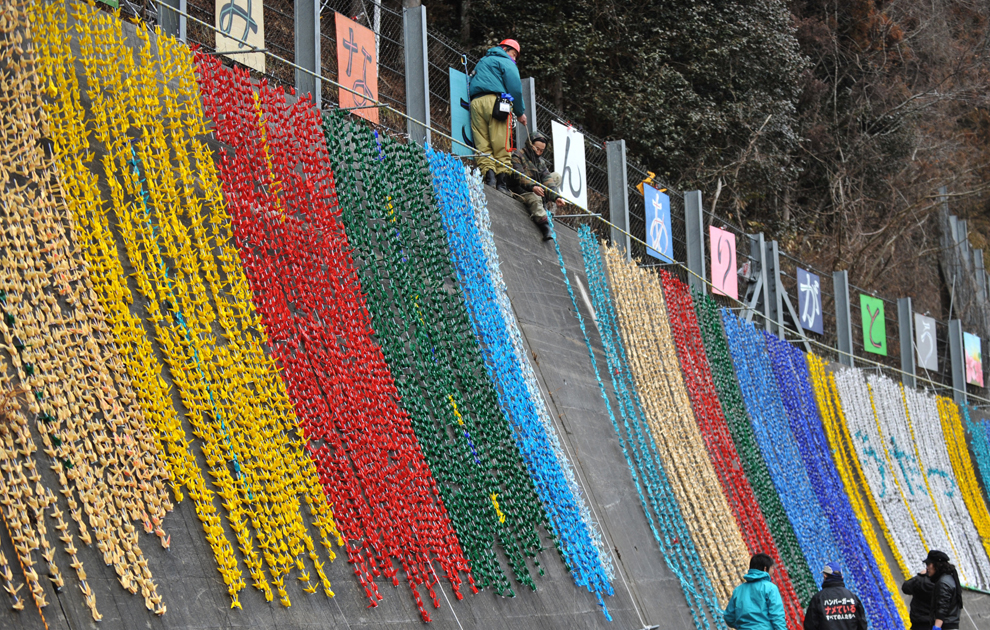
People hang paper cranes designed as prayers for the the souls of victims of the disaster in Minamisanriku, Miyagi prefecture on March 10, 2012.
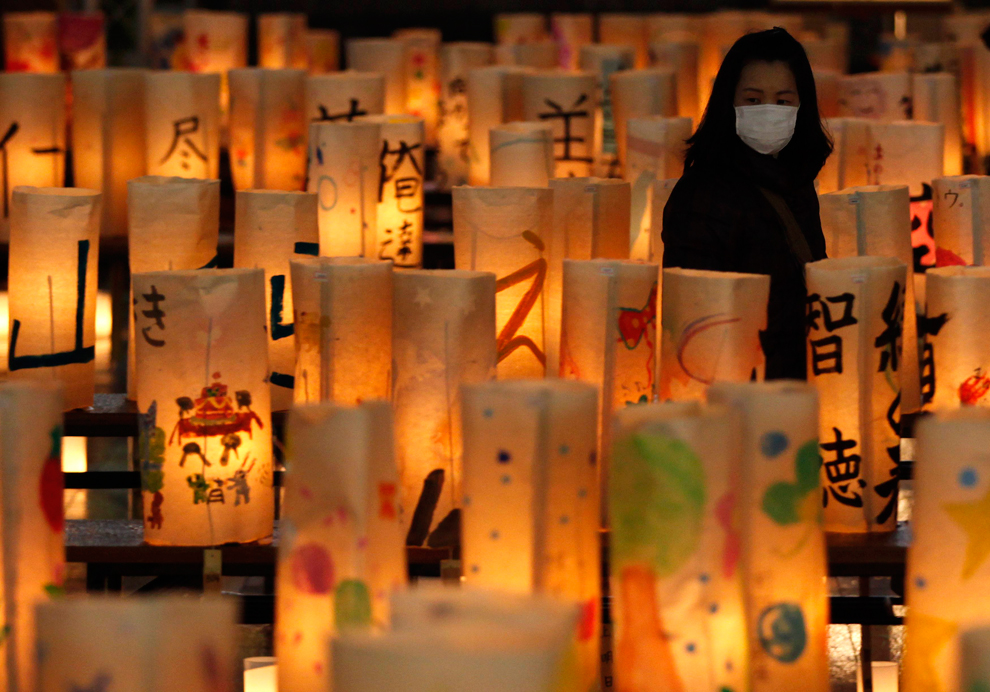
A woman looks at paper lanterns created at a memorial for the victims of the disaster in Koriyama, Fukushima prefecture on March 10, 2012.
- Joined
- Aug 3, 2008
- Messages
- 23,454
- Points
- 0
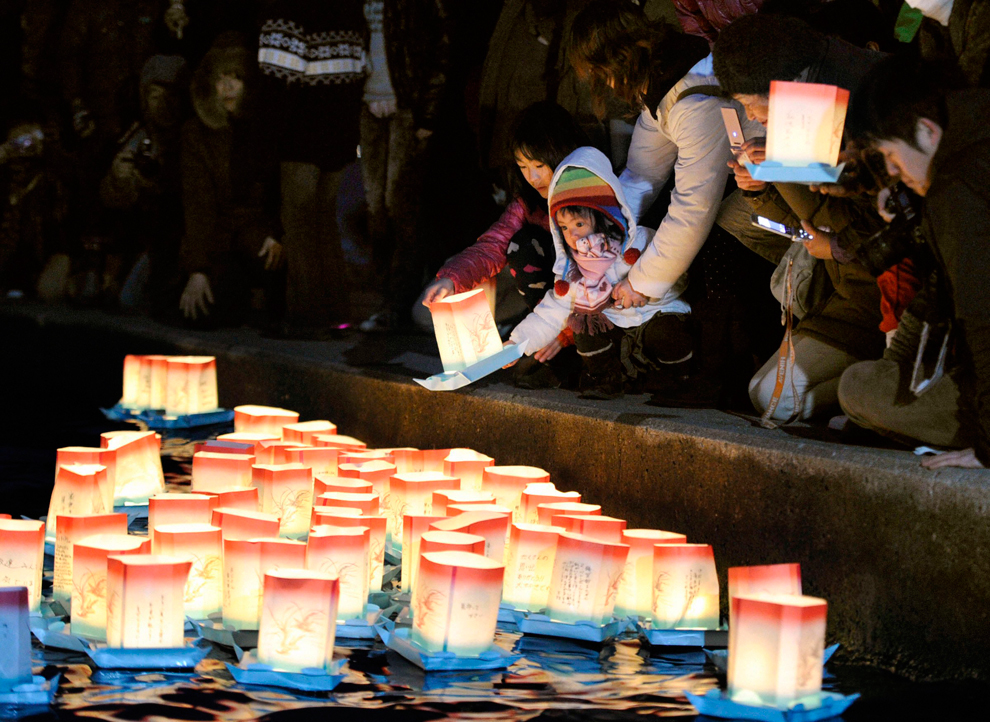
Paper lanterns, lit to mourn the disaster victims, are released into the sea in Yamada town, Iwate Prefecture on March 10, 2012
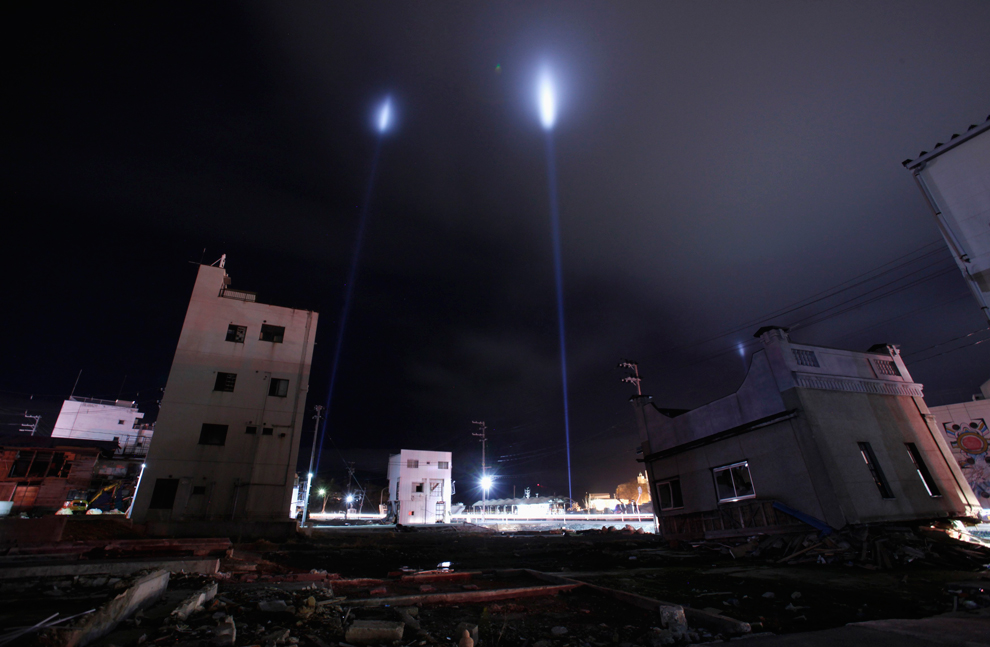
Beams of lights, marking the first anniversary of the disaster, illuminate the sky above a destroyed area in Kesennuma, Miyagi prefecture on March 11, 2012.
- Joined
- Aug 3, 2008
- Messages
- 23,454
- Points
- 0
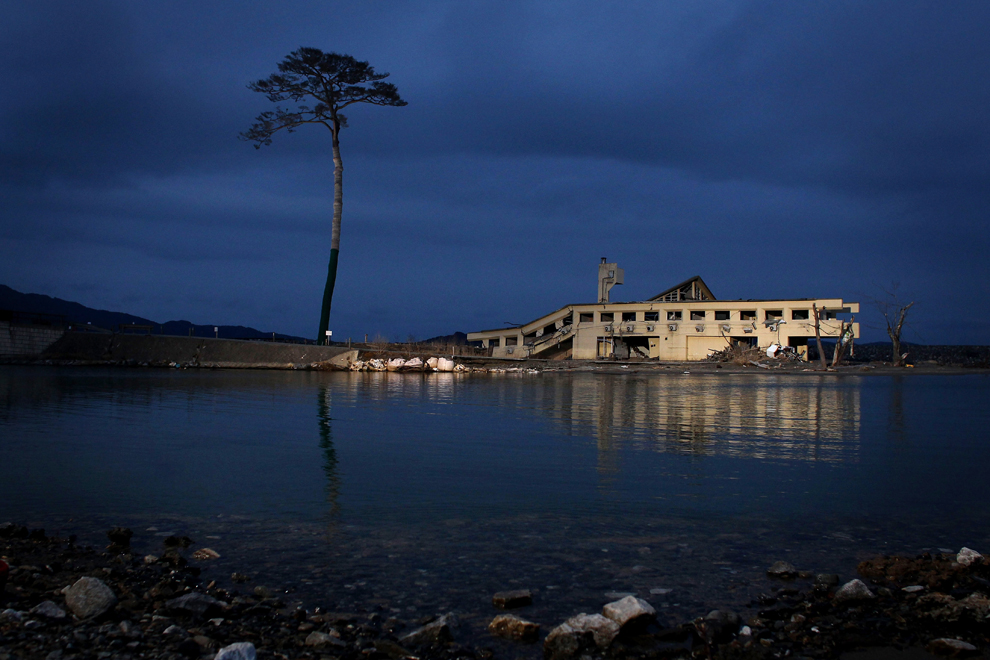
A single pine tree that was left standing after the tsunami last year which swept away an entire forest, stands on March 10, 2012 in Rikuzentakata, Japan. The effected areas have been inundated with families and the limited amount of hotels in the area are at capacity with the world's media arriving to take part in ceremonies
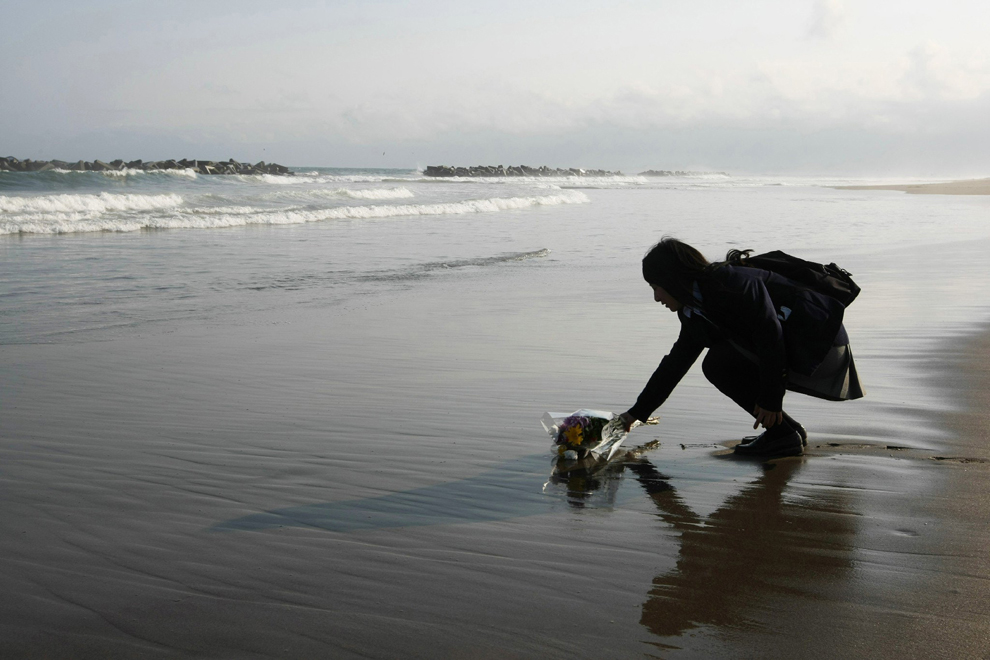
Mai Otomo, 17, whose father was killed by the tsunami, lays a flower bouquet on the Arahama beach and offers prayers for the victims in Sendai city in Miyagi prefecture on March 11, 2012.
- Joined
- Aug 3, 2008
- Messages
- 23,454
- Points
- 0

A samba dancer walks carefully in the snow after performing at the opening of a temporary shopping complex at the Shizugawa district in Minamisanriku town north of Sendai on February 25, 2012. Small shops that were destroyed in the disaster resumed their businesses in prefabricated buildings. To survive, towns such as Yamada, Miyako or Minamisanriku need local people, who are increasingly drifting away to the cities, to hang on. But they also need to revamp industries - fishing and farming - and bring and retain longer-term investment and jobs.
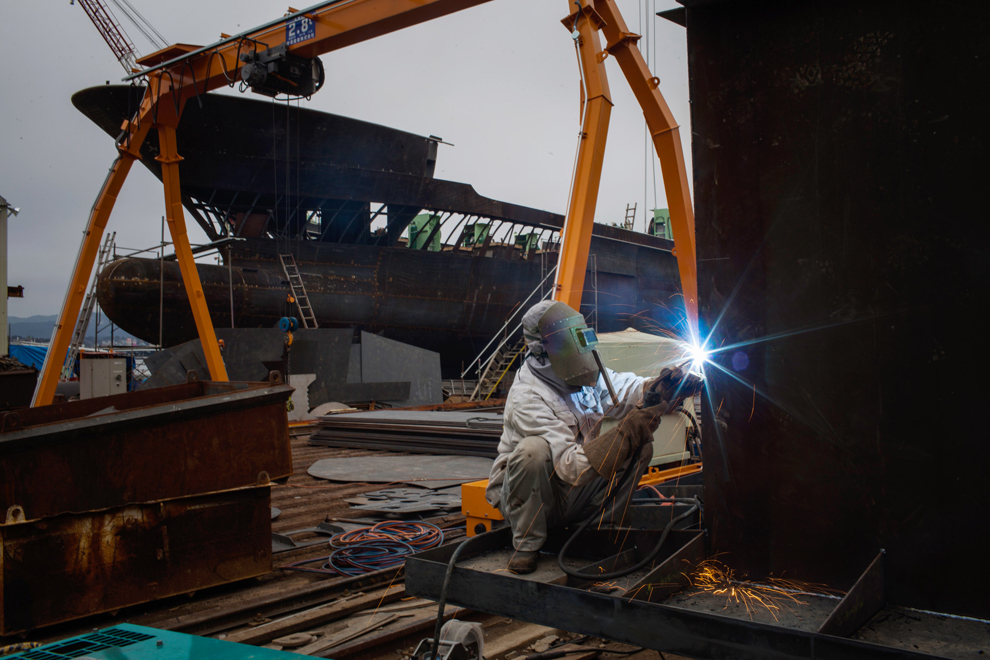
Tokio Ito welds on the first two fishing ships to be built since last year's tsunami destroyed the Kidoura ship building yard, on March 8, 2012 in Kesennuma, Japan. Numerous fishing towns had their equipment, factories, boats and livelihoods washed away. As a result large numbers of fisherman have turned to alternative industries, including laboring to clean the mountains of rubble left behind the tsunami, but most fight the uphill battle of rebuilding from scratch.
- Joined
- Aug 3, 2008
- Messages
- 23,454
- Points
- 0
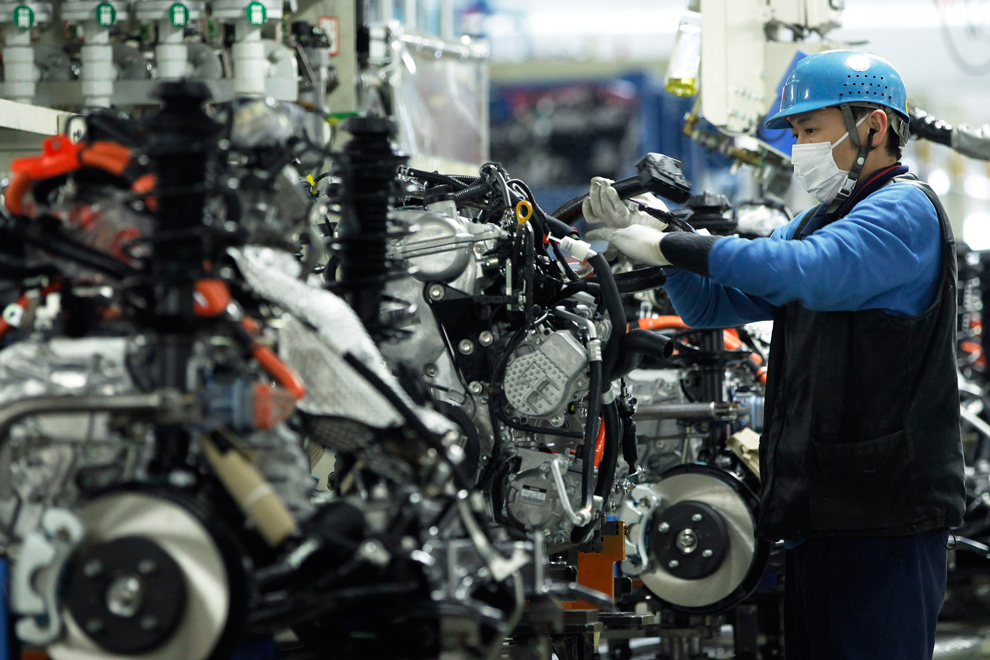
A Kanto Auto Works Ltd. employee inspects an engine for a Toyota Aqua hybrid vehicle on the production line of the company's Iwate Plant in Kanegasaki Town, Iwate Prefecture, Japan on March 9, 2012. Toyota now makes more cars in the Tohoku area than it did before the disaster, leading a regional recovery by electrical component suppliers and makers of cars and chips
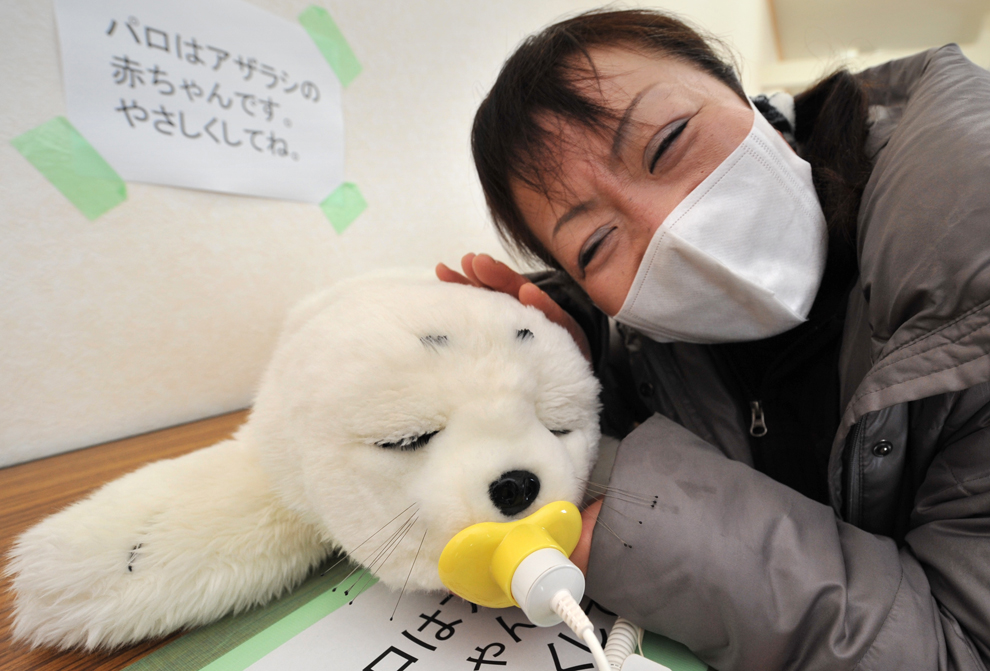
Tsuyako Kumagai, a survivor of the tsunami, touches a therapeutic robot baby seal called 'Paro' in temporary housing in Kesennuma, Miyagi prefecture on February 11, 2012. The seal robots have been made available to people living in temporary houses erected in a baseball stadium in the port town of Kesennuma, an area badly hit by the tsunami.
- Joined
- Aug 3, 2008
- Messages
- 23,454
- Points
- 0
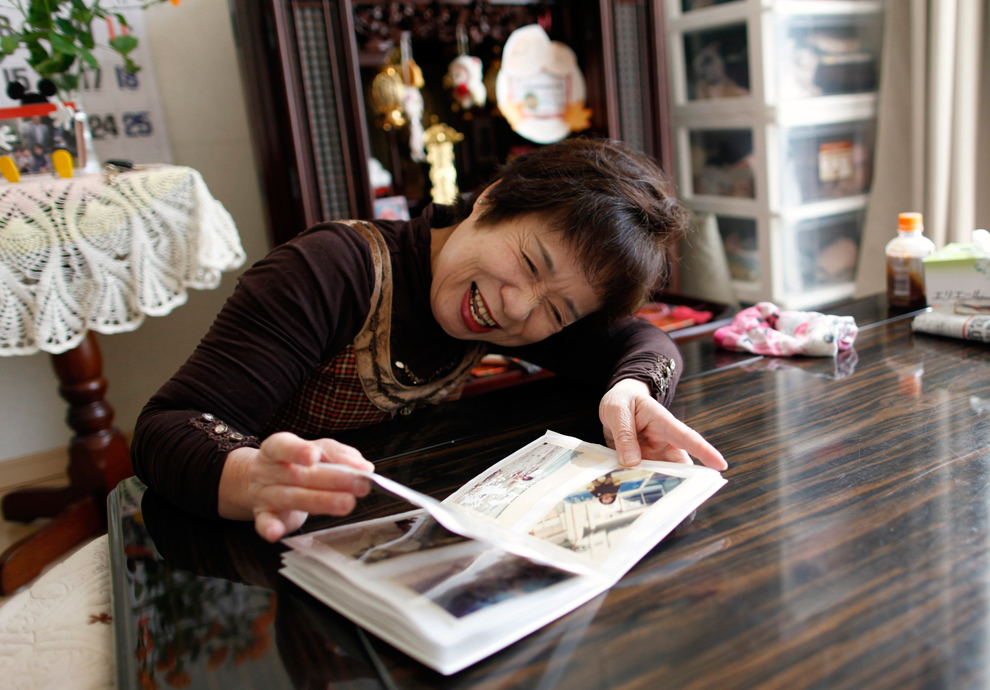
Tokie Sakamoto reacts as she flips through an album of her family photographs, which were washed away by the tsunami, after receiving them from volunteer in Ofunato, Iwate prefecture on February 20, 2012
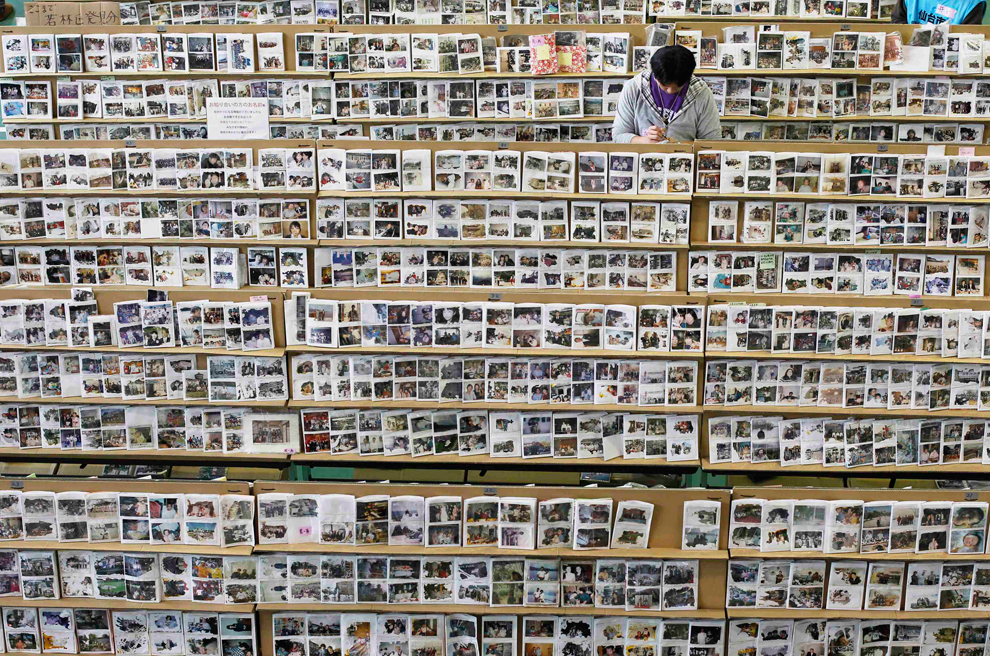
A man looks for his photographs at a collection center for items found in the rubble of an area devastated by the disaster in Sendai, Miyagi prefecture on March 9, 2012
- Joined
- Aug 3, 2008
- Messages
- 23,454
- Points
- 0
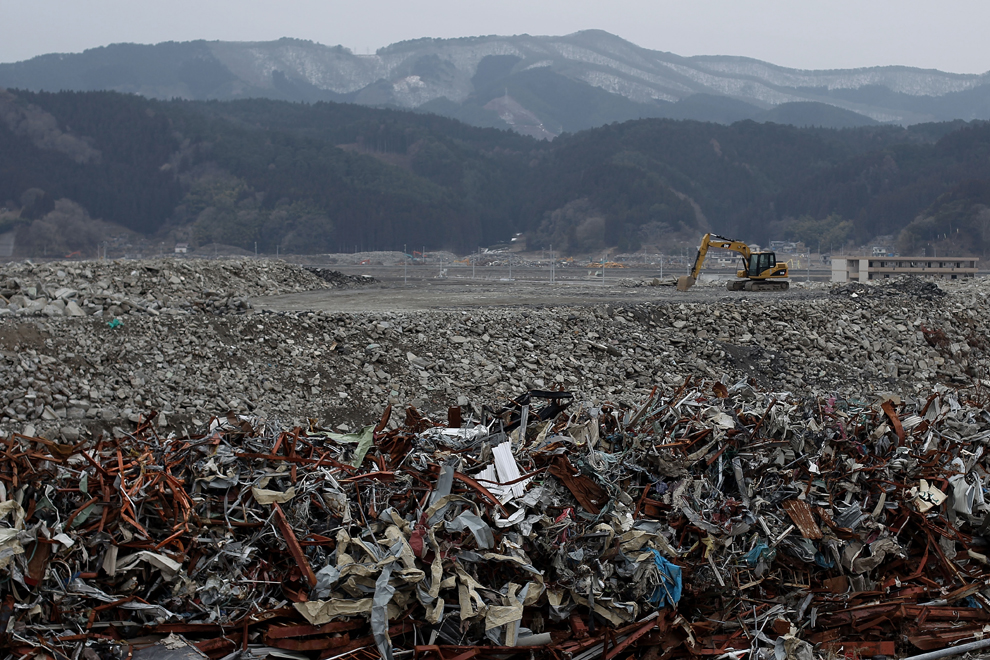
Machines work to sort and clear massive piles of scrap metal and debris on March 9, 2012 in Rikuzentakata, Japan. The Japanese government faces an uphill battle with the need to dispose of rubble as it works to rebuild economies and livelihoods.

A bus is removed from a roof in Ogatsu district in Ishinomaki, Miyagi prefecture on March 10, 2012.
- Joined
- Aug 3, 2008
- Messages
- 23,454
- Points
- 0
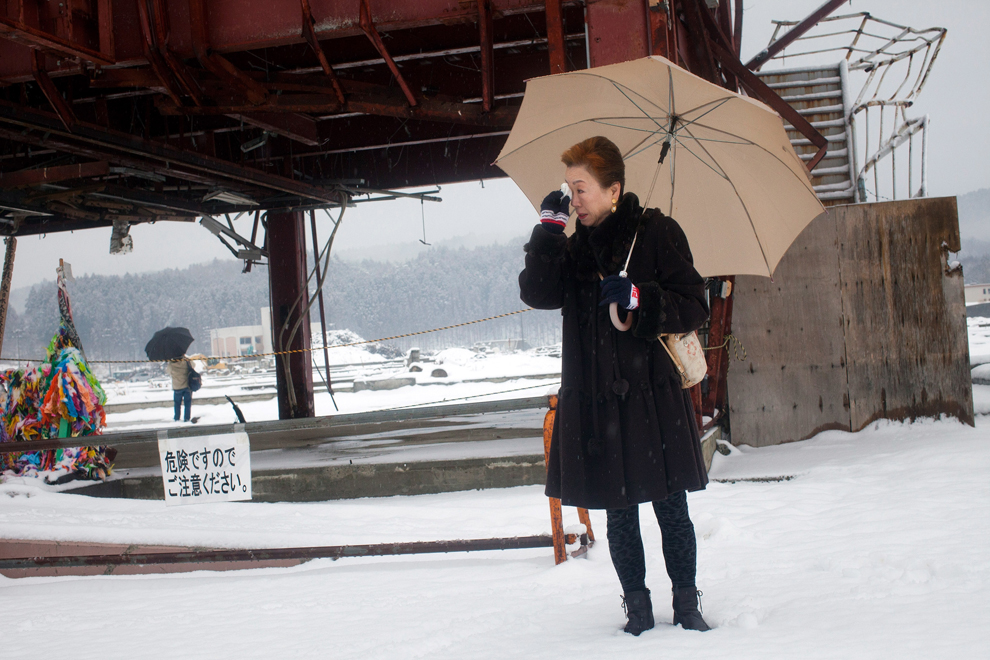
Tei Eiki cries after paying her respects to the victims of the disaster in front of the ruined Minamisanriku Disaster Emergency Center during a bus tour of the devastated areas on March 5, 2012 in Minamisanriku, Miyagi prefecture.
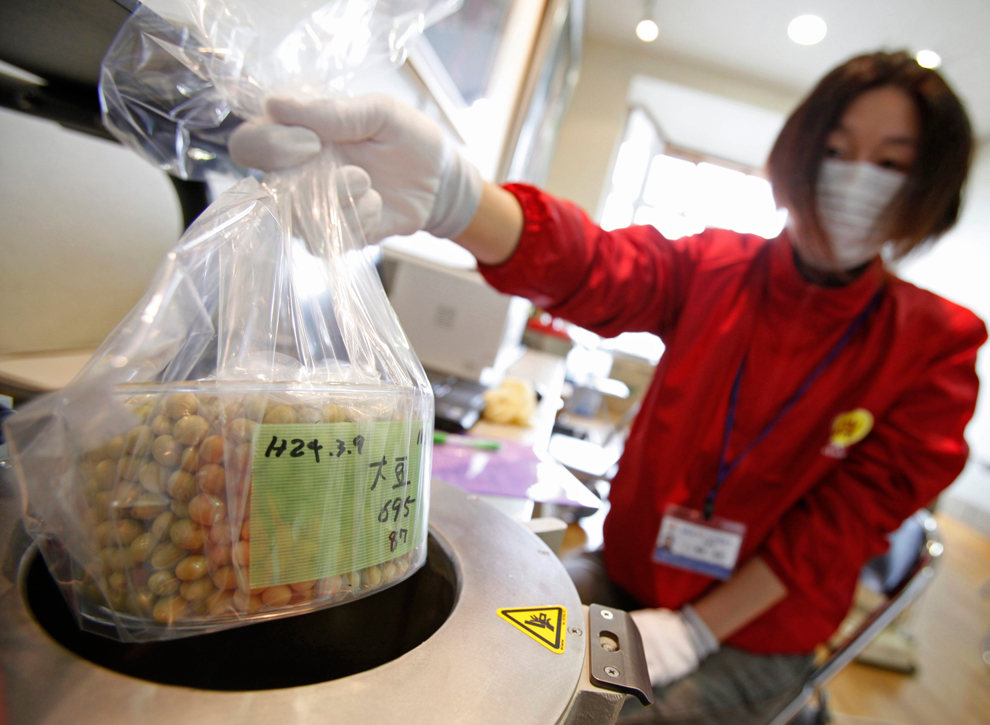
A temporary worker for the Fukushima prefectural government puts beans inside a radiation measuring instrument at the Fukushima municipal office Azuma branch in Fukushima, Japan on March 9, 2012. Fukushima city started measuring radiation in food items brought in by residents.
- Joined
- Aug 3, 2008
- Messages
- 23,454
- Points
- 0

Reina Endo, 7, is screened for radiation during a whole-body radiation check at the Minamisoma City General Hospital just outside the nuclear evacuation zone on March 9, 2012 in Minamisoma in Fukushima Prefecture, Japan. Radiation is still being emitted from the shuttered nuclear plant. Over 20,000 people are registered on waiting lists to get their radiation levels measured
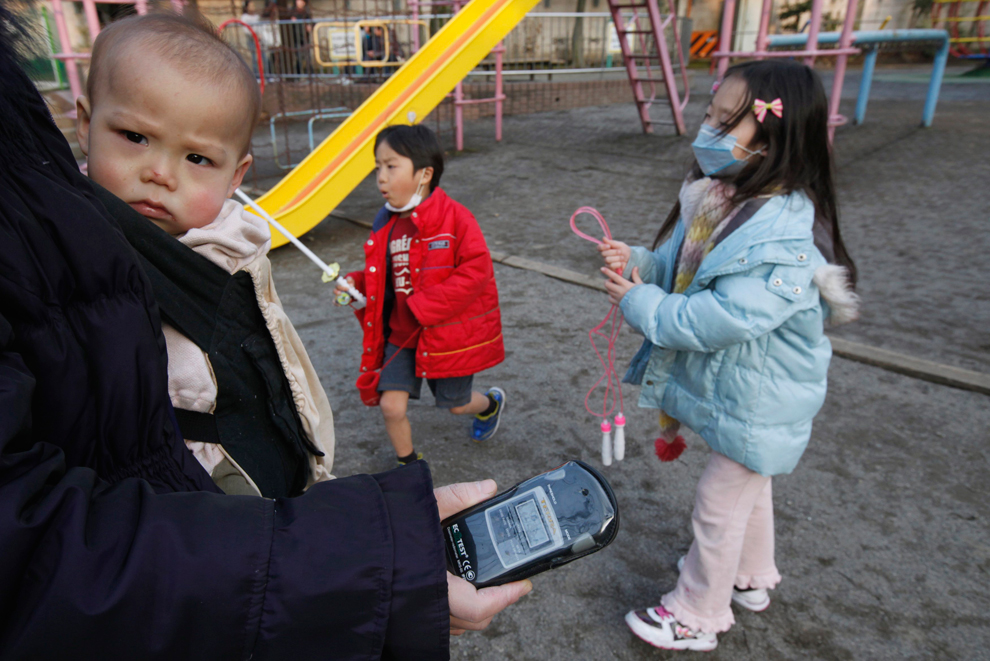
Saiko Yokozeki holds a a Geiger counter with her children at a playground near her home in Tokyo on March 3, 2012. Becquerels and sieverts are part of everyday vocabulary, Geiger counters are household items in parts of the country, and saving electricity has become a year-round activity as the myth of clean and safe nuclear energy is dead.
Similar threads
- Replies
- 5
- Views
- 483
- Replies
- 9
- Views
- 427
- Replies
- 1
- Views
- 376
- Replies
- 5
- Views
- 932











